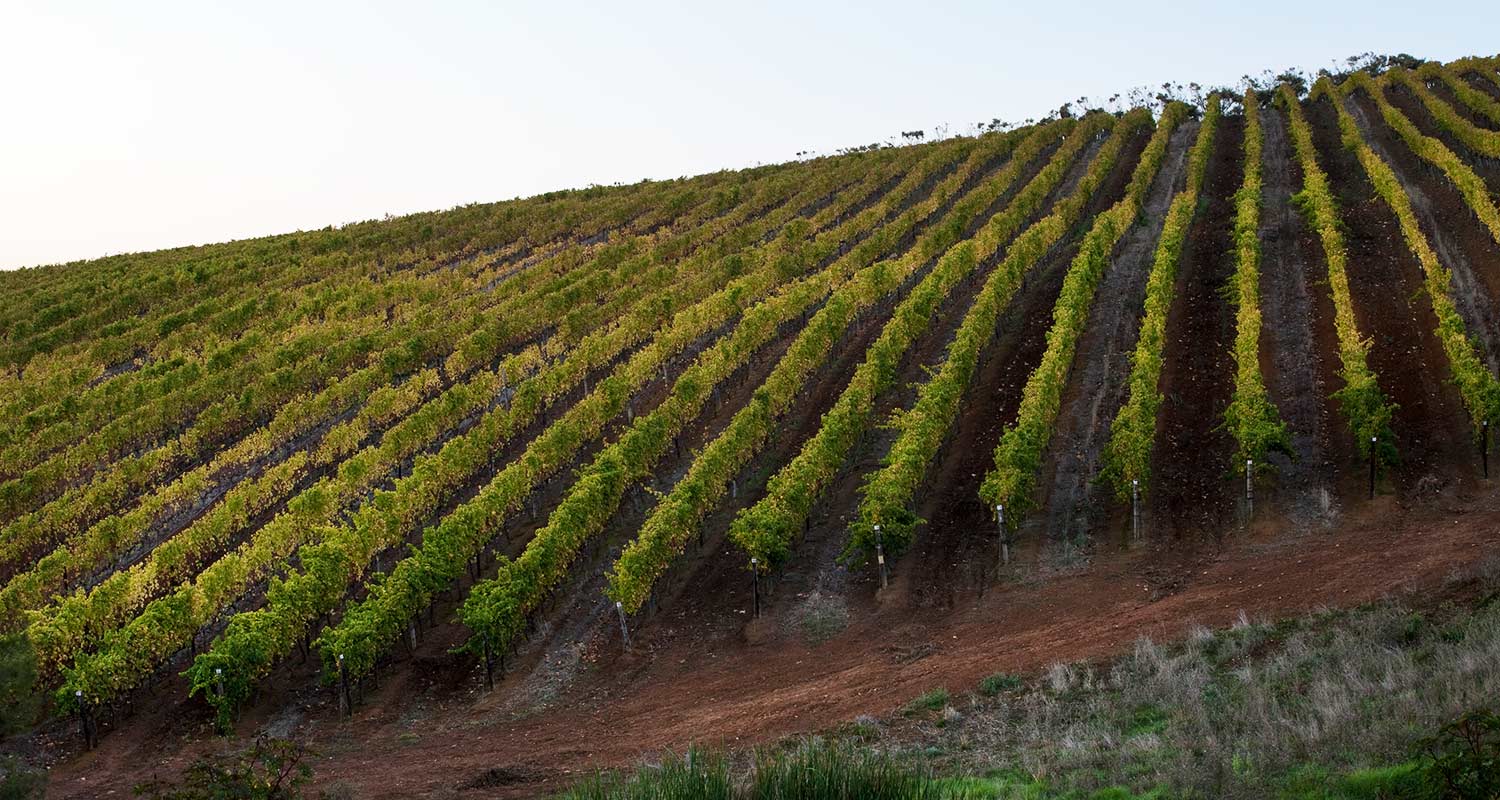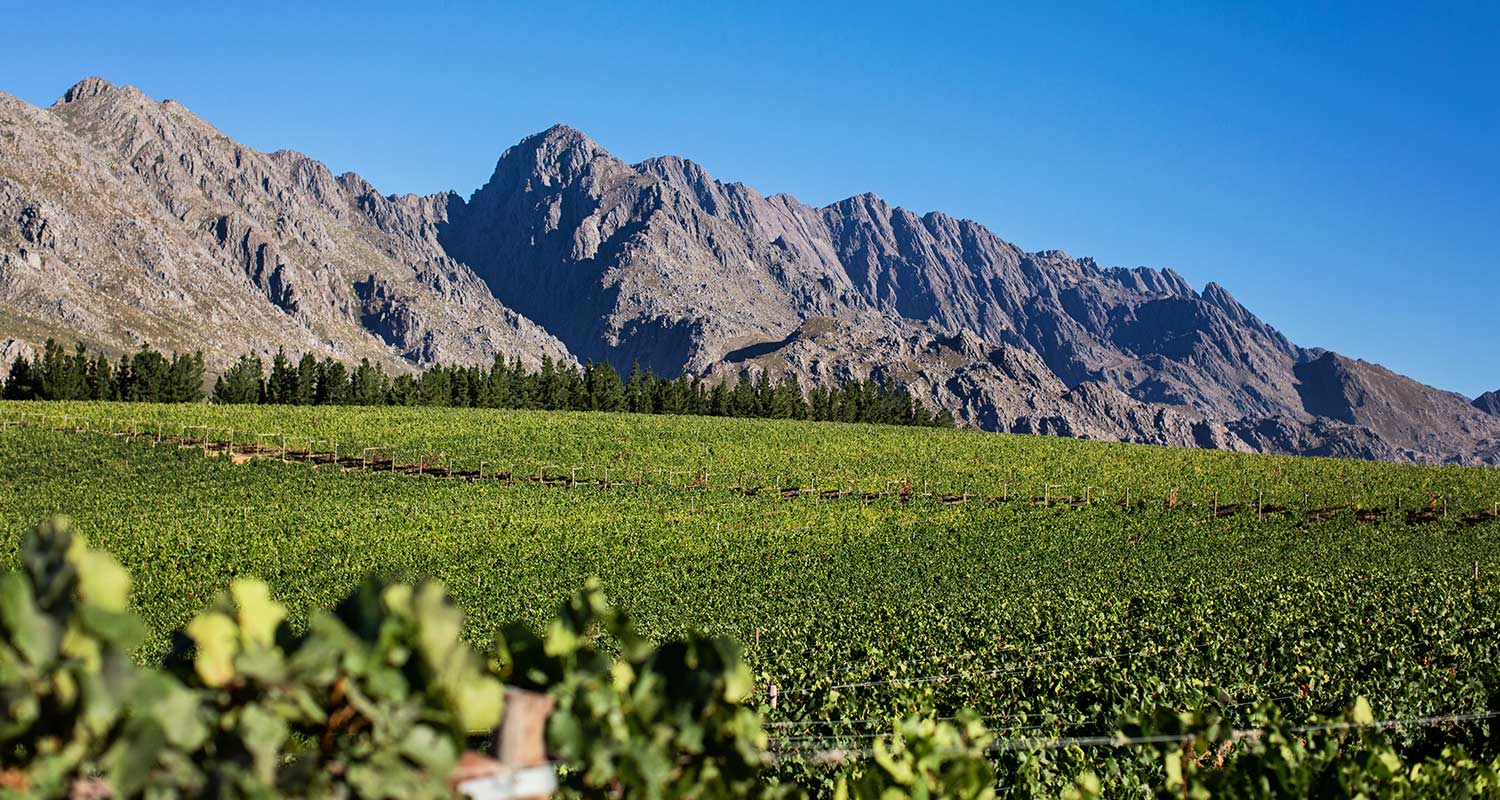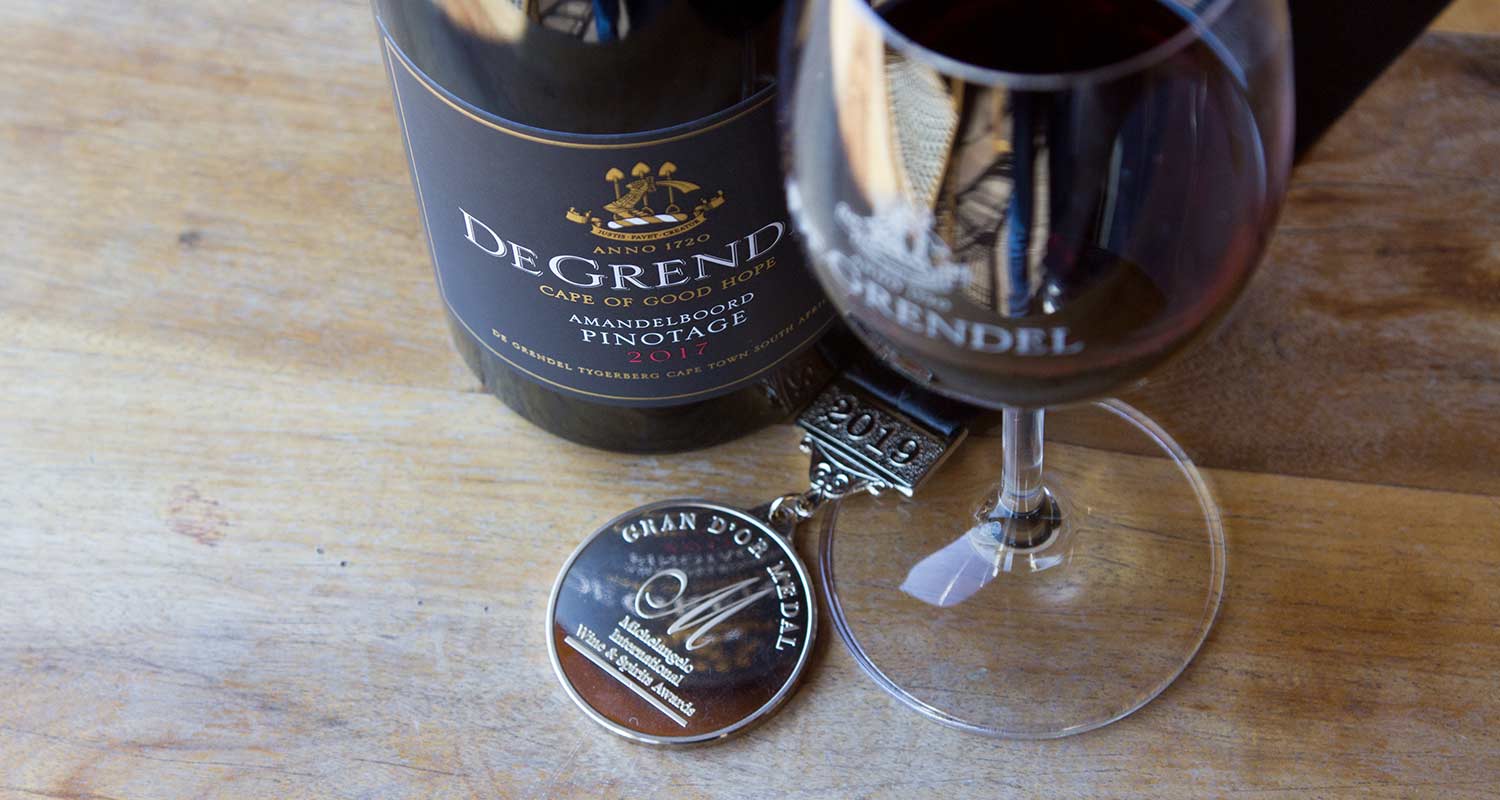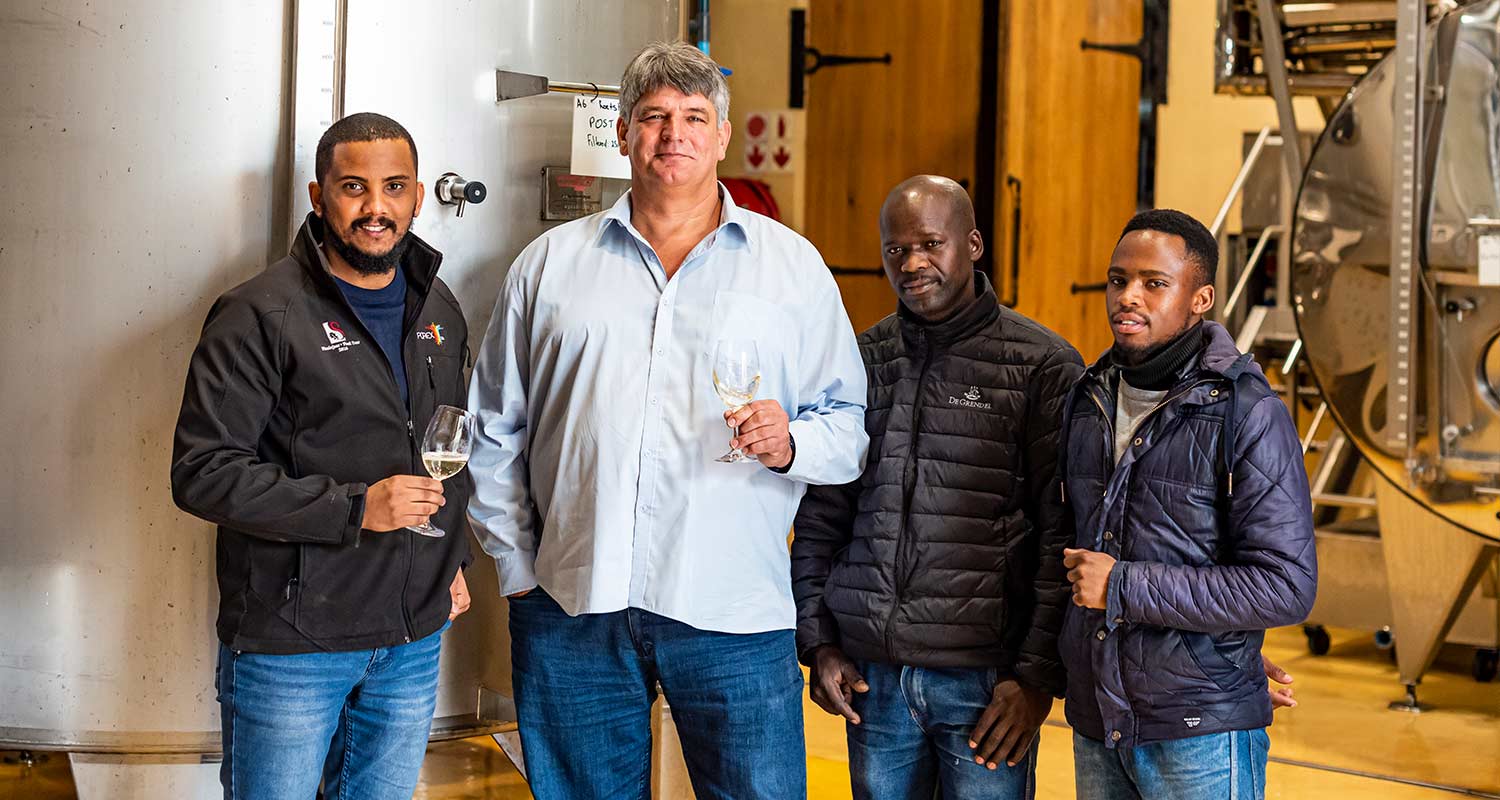
De Grendel Harvest Report 2020 by Charles Hopkins
Share
With the 2020 harvest having made it into the cellar just in time before South Africa’s national lockdown, we sat down with Cellar Master Charles Hopkins for a quick chat about the prospects for this year’s crop.
Q: Vinpro recorded that the 2019 harvest hit a record low, largely due to the preceding drought and fluctuating weather conditions during the season. How does this compare to the 2020 harvest?
I see the 2020 harvest being up about 5 to 10 percent, and it’s not only a bigger harvest but an excellent one too. We had good winter rains, and enough moisture in the ground from bud-break through to harvest, and that was a very encouraging sign pointing to a quality harvest.

Q: What were the weather conditions like in the growing season, and how did these influence the grapes?
We had fluctuating rain and heat from around the start of ripening (veraison) in January/February. The fluctuation of even small amounts of rain with mild heat waves can cause the grapes to stop-start growth and to ripen too fast. There’s a risk of rot from rainy conditions, and you don’t want the fruit to “cook” on the vine due to the heat, so we knew that getting the sugar levels precisely right was going to be a challenge.
Q: How do grape and bunch sizes compare to previous years?
The bunch sizes were a little bigger due to having more rain, but not notably so. We are very focused on the berry and cluster weights, to get the perfect balance of skin, fruit flesh, seeds and juice that leads to concentrated flavours in the wine.
Q: We continue to see a decline in area under vines throughout South Africa. Have there been any changes in the vineyards at De Grendel?
We removed a number of blocks several years ago and replanted with new Sauvignon Blanc vines, enabling us to build this up as our signature white varietal, as well as Merlot which plays a key role in our red wines. We are now busy planting our first Shiraz vines on the farm and I’m looking forward to harvesting the first of these in two to three years’ time and bringing a new dimension to our Shiraz offering. We also planted Shiraz at 1000m above sea level in the Ceres plateau region some time ago and expect to release that as a single vineyard wine in the next year or two.

Q: Did you manage to finish the harvest in time before the national lockdown started? And has lockdown impacted on the winemaking processes in the cellar?
Fortunately for us, lockdown wasn’t a major factor as far as harvest and winemaking goes – our harvest was in the cellar and the grapes pressed by the time lockdown started. We’re working with a skeleton staff and have been able to come in regularly and check on progress with fermentation.
Q: What were your biggest challenges this year?
Timing. Because of the rain and heat fluctuating, we had to time the harvest very carefully to make sure the sugar levels were perfectly where we wanted them to be.
Q: Any grape varieties from De Grendel that are looking particularly good this year?
Merlot is looking particularly good; Petit Verdot is great, always our stalwart; and I believe Pinotage is probably going to be one of the best we’ve ever made. All in all, I’m very satisfied that the wines are all showing good balance.

Q: What can consumers expect from the grapes harvested in Ceres for your Op die Berg Chardonnay and Pinot Noir?
We’ve had a bigger harvest from Op die Berg this year, which I’m really pleased about, and they’re showing great potential. So consumers can expect to see a few more bottles being available of the 2020 vintage, and from a very good vintage.
Q: Any new cellar practices that you implemented this year? Something new you are experimenting with, or any new wines consumers can look forward to from the 2020 vintage?
Our assistant winemaker Morgan Steyn and winemaking protégé Kelsey Shungking have done a bit of an experiment with natural fermentation on some of the Chardonnay. It’s an interesting process to undertake, and the results are looking very promising. Watch this space!

